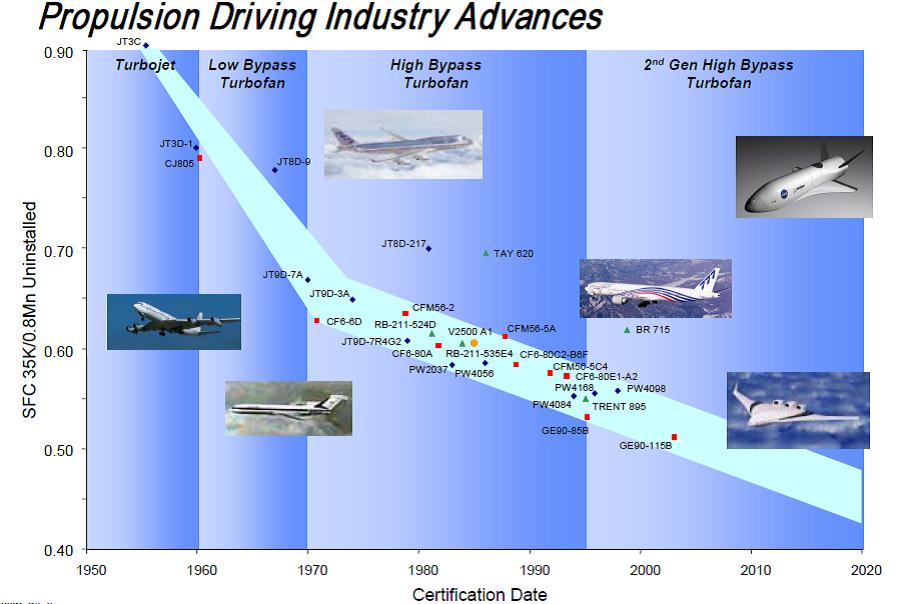What will be the next generation jet engine?
Jet engines are more efficient engines, but in safety point of view till we need to develop a new concept and technology to make safer and efficient to compare to present-day technology. Present concept on future jet engine is to reduce the noise, increase efficiency, reducing size, weight and etc. When we think about the engine efficiency point of view, the turbine inlet temperature should be increased in order to increase thrust and power in jet engine, gas turbines or reheated to increase the thrust with extra use of fuel. When turbine inlet temperature high and increased, the vane and turbine blade needed a new material to with stand this high inlet temperature. I have developed a Multistage Stage Combustion Jet Engines with Gimbals and Engine Emergency System, which is based on five main aspects
1. Increasing thrust in Turbojet/Fan Engine, Increasing shaft power in Turboprop/Shaft Engine at present engine configuration (without increasing turbine inlet temperature or reheating with extra fuel)
2. Propulsion Control Aircraft (Gimbal Control Thrust)
3. Engine Emergency System
4. Nozzle Extension (Noise Reduction - RYAN Combustion)
5. Advanced Thrust Reverse System
At present, the next generation concept is to reduce the weight by using composite material and increasing specific fuel consumption, reducing noise, designing efficient engine components (fan blade, compressor, combustor, turbine and nozzle). My concept is entirely new one which has the primary option of safety of passenger when engine and aircraft control system fails.
In modern jet engine approximately two thirds of total energy developed within the combustion chamber is used by the turbine wheel to sustain the operation of compressor, the remaining energy is discharged from the rear of the engine as low/high jet velocity, the reaction to which is thrust forward or forward movement of the engine. In turboprop and turboshaft engine, the same events are happening to drive the propeller and rotor. This multistage combustion system will provide solution for various problems, which is arising in modern jet engine.
Multistage Combustion System
The multistage combustion system separates and extracts power for the turbine and for the jet thrust in turbofan/jet engine and separates power for turbine and for the output shaft power in turboprop/shaft engine. This provides high velocity hot exhaust gases as jet thrust in both the turbofan/jet engine. It delivers high power to the power turbine compare to today’s conventional turboprop/shaft engine. This will provide very low TSFC. It reduces the engine size and weight. Nearly 30% power produced within the engine is used by the tail rotor and remaining power is used in main rotor in helicopter engine. This system will provide unique power to each rotor system in helicopter.
Gimbal Control Thrust in Turbofan/Jet Engine
Jet thrust from the turbofan/jet engine is controlled by the Gimbals. This gimbal control thrust provides the stability, control to the aircraft when aircraft control system and hydraulic system fails.
Engine Emergency System
Engine Emergency System provides compressed air to the multistage combustor chamber, when bird hit on the engine and engine fails, this engine helps to land the aircraft safely.
Nozzle Extension
Noise from the RYAN Combustion is the main disadvantage of this jet engine. So reduce the noise from the RYAN Combustion, the hot exhaust from the RYAN Combustion is mixed with the ambient air (mixed flow system) in such a way noise in the turbofan is reduced.
Advanced Thrust Reverse System
Today’s thrust reverse system produce drag when air direction is deflected. But the advanced thrust reverse system provides opposite thrust and drag. This system has convergent-divergent nozzle system where the air speed is accelerated to supersonic speed otherwise the system has mini turbine engine, propulsor and nozzle. The propulsor is driven by the mini turbine engine. The by bypass air is used propelled by the propulsor to deliver the thrust and drag.
Generally engine failure leads to a big air disaster. In such case Hudson River miracle can happen. So we need a better, efficient, safer and quitter engine for future air transport, which ensures the passenger safety when it fails and other system in the aircraft fails. At any circumstances this Multistage Combustion Engine failure will not lead to an air crash. This technology is possible in all types of jet engines and gas turbines.
If we can design an efficient compressor and turbine in future we could reduce the size and weight of the engine and we could increase thrust to weight ratio.

